The whisper key is located on the side of the wing joint that faces the player.
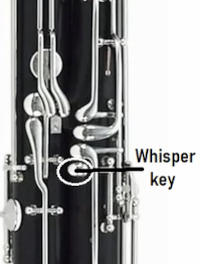
The whisper key moves the whisper-key pad at the top of the wing joint.
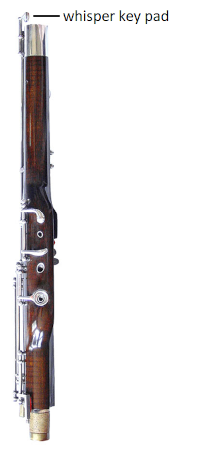
The bocal has a small nub on the side near the corked end.
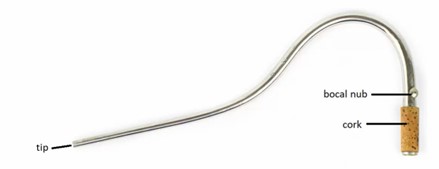
The whisper key is operated by the left thumb. When pressed, it covers the vent (small hole) in the bocal nub. Closing this hole helps the notes on and below the bass staff speak in the proper (lower) octave.
Note: The other woodwind instruments have an octave or register key that, when pressed, opens a hole near the top of the instrument so the higher notes can speak. The whisper key on the bassoon closes the highest hole so the lower notes can speak. It is basically a “reverse octave key.”
Whisper Key not engaged (up)
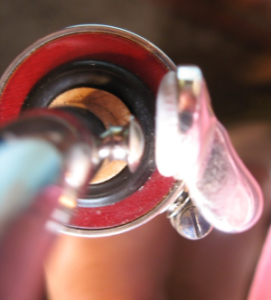
Whisper Key Engaged (pressed)
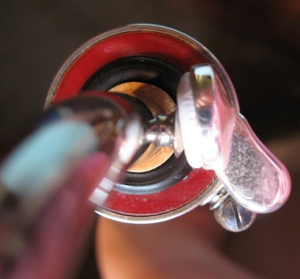
Covering the hole in the nub on the bocal allows the notes in and below the bass staff to speak in their proper octave.
The whisper key is pressed by the left thumb for the following notes:

Locating the Whisper Key on Different Models of Bassoons
The whisper key is the lowest button on the wing joint, regardless of the model of bassoon. On a basic student model bassoon, the whisper key will be the fourth thumb key down on the wing joint.
Basic Student Model
More advanced models will have a high D key which is placed above the four thumb keys on the wing joint found on the basic model. On models with a high D key the whisper key will be the fifth thumb key down on the wing joint.
Intermediate Student or Artist Model
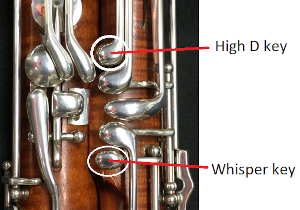
Note: The high D key makes it easier to play certain notes, but it is possible to play all but the highest notes on a bassoon without one so don’t worry if your bassoon does not have a high D key. Fingering diagrams in this volume will include the high D key.
The diagram below shows how the left thumb keys look on the fingering chart.
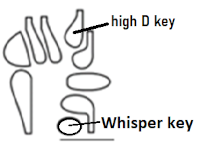

Feedback/Errata